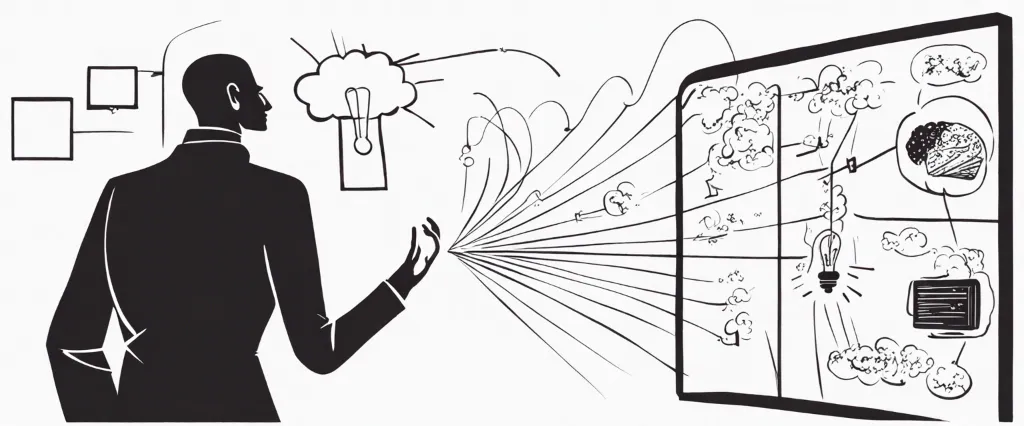
In his book “Black Box Thinking: The Surprising Truth About Success,” Matthew Syed delves into the concept of learning from failure to achieve success. Drawing upon a diverse range of fields including aviation, healthcare, and sport, Syed explores how embracing mistakes and adopting a growth mindset can lead to remarkable advancements and breakthroughs. As a former Olympic table tennis player and award-winning journalist, Syed uniquely combines personal experiences with extensive research to present a compelling argument for the power of learning from failures. In this enlightening book, he dismantles the fear and stigma surrounding failure, urging readers to embrace it as a vital stepping stone towards progress and innovation.
Chapter 1: Embracing Failure for Success
Chapter 1 of “Black Box Thinking” by Matthew Syed, titled “Embracing Failure for Success,” explores the concept of how societies and individuals can learn from failures to achieve greater success. Syed highlights the problem with our aversion to failure and how it hampers progress in various fields, such as aviation, healthcare, and criminal justice.
The chapter begins with an examination of the aviation industry and the development of “black boxes” in airplanes. These devices record the technical details of every flight, including any failures or mistakes made by the crew. By analyzing these failures, the aviation industry has been able to continuously improve safety standards and drastically reduce accidents over the years. Syed argues that this systematic approach of embracing failures and learning from them, known as the “black box thinking,” should be applied in other industries as well.
Moving beyond aviation, the chapter delves into the healthcare system and the immense costs of medical errors. Syed contrasts the aviation industry’s proactive approach to the healthcare system’s reactive response to mistakes, often characterized by blame and denial. By acknowledging and learning from failures, Syed argues that the medical industry could save countless lives and improve patient outcomes.
Furthermore, the author explores the criminal justice system and its reluctance to admit mistakes and learn from them. He highlights cases of wrongful convictions caused by the system’s failure to adequately analyze evidence and reassess assumptions. Syed emphasizes that learning from past mistakes is crucial to avoiding repetitive errors in the future.
Syed concludes the chapter by discussing the importance of cultivating a culture that embraces failure, encouraging individuals and organizations to acknowledge their mistakes openly and evolve. By adopting a black box thinking mindset, society as a whole can drive progress and improve outcomes in various domains.
Chapter 2: Learning from Mistakes
Chapter 2 of “Black Box Thinking” by Matthew Syed is titled “Learning from Mistakes.” In this chapter, Syed explores the importance of embracing mistakes as valuable learning opportunities in order to achieve growth and progress in various aspects of life.
Syed begins by highlighting the culture of blame that exists in several industries, including healthcare, aviation, and education. He argues that the fear of failure often prevents individuals and organizations from acknowledging and learning from their mistakes. This blame culture, Syed contends, hinders progress and stifles innovation.
To illustrate this point, Syed explores two major disasters: the aviation accidents involving Korean Air Flight 801 and American Airlines Flight 587. Both tragedies were a result of human errors and poor decision-making, yet only the aviation industry implemented significant changes to prevent similar incidents from occurring again. Syed attributes this difference to the aviation industry’s commitment to a “no-blame” culture and the implementation of black box analysis to identify and address errors.
Syed introduces the concept of a “mindset of growth” where individuals and organizations view mistakes as opportunities for improvement. He explains that this shift in mindset requires acknowledging mistakes, analyzing them honestly, and implementing changes based on the lessons learned. This approach, Syed argues, can be applied to various fields beyond aviation.
The chapter also explores the story of David Brailsford, the British Cycling team’s performance director. Brailsford revolutionized the team’s approach by embracing a culture of continuous improvement, focusing on marginal gains and learning from mistakes. This led to unprecedented success for British cycling in the Olympics.
In conclusion, Chapter 2 emphasizes the importance of embracing and learning from mistakes, rather than seeking to blame or ignore them. By creating a culture that encourages learning and improvement, individuals and organizations can harness mistakes to drive growth and achieve exceptional results.
Chapter 3: The Power of Feedback
Chapter 3: The Power of Feedback delves into the crucial role that feedback plays in the process of learning and improvement, and how it applies to various fields, including aviation, healthcare, and sport. Matthew Syed emphasizes that in order to achieve progress, we must be receptive to feedback and actively seek it out.
The chapter starts by illustrating the significance of feedback in aviation. Syed recounts the story of British Airways flight 5390, which experienced a catastrophic failure that resulted in the cockpit windshield being blown out mid-flight. The captain, Tim Lancaster, survived despite being partially sucked out of the plane. This incident led to an investigation that identified design flaws and resulted in numerous safety improvements across the aviation industry. Syed highlights that this approach of learning from mistakes and embracing feedback has made aviation one of the safest forms of travel today.
Moving on to healthcare, Syed describes how feedback can save lives. He discusses the tragic case of Robbie Powell, a young boy whose life could have been saved had the medical professionals involved in his care been more open to feedback and shared information effectively. Syed argues that a culture of learning from errors, rather than hiding them, is crucial for progress in healthcare systems.
The chapter also touches on the importance of feedback in sports, drawing upon examples from tennis and cricket. It emphasizes the role of coaches and teammates in providing constructive criticism and support for improvement.
Syed concludes the chapter by emphasizing the necessity of embracing feedback and learning from failure. By adopting a mindset that sees feedback as an opportunity for growth rather than a personal attack, we can create a culture of continuous improvement in various domains. The power of feedback lies in its ability to uncover hidden mistakes, challenge assumptions, and ultimately drive progress.
Chapter 4: Challenging Assumptions and Biases

Chapter 4 of the book “Black Box Thinking: Marginality, Prejudice, and Stereotyping” by Matthew Syed examines the pervasive nature of assumptions and biases within our lives and how challenging them can lead to better outcomes.
Syed starts by discussing the concept of marginality and how categorizing people into groups can perpetuate biases and discrimination. He explains that assumptions and biases are often formed without conscious thought, a product of our upbringing, culture, and personal experiences. These biases can lead to closed-mindedness and prevent us from truly understanding others or considering alternative perspectives.
Moreover, Syed highlights how assumptions and biases can have serious consequences in various fields. He looks at case studies from healthcare, aviation, and criminal justice, showcasing how stereotypes and assumptions can lead to misdiagnoses, prevent the identification of systemic problems, and even result in wrongful convictions.
To challenge these biases, Syed suggests three key steps. Firstly, people must recognize and acknowledge the existence of their own biases. This requires a genuine commitment to self-reflection and introspection. Secondly, individuals need to actively seek out different perspectives and information that challenges their assumptions. This includes engaging with people from diverse backgrounds and actively listening to their experiences. Lastly, learning from mistakes and feedback is vital; developing a culture of humility and continuous learning can help to mitigate the negative effects of biases.
By challenging assumptions and biases, Syed argues that we can create an environment where openness, learning, and innovation can thrive. This mindset is crucial in fields such as healthcare and aviation, where small mistakes can have catastrophic consequences. Ultimately, Syed proposes that by embracing a black box thinking approach and fostering open dialogue, we can move beyond biases and stereotypes and achieve better outcomes in all aspects of life.
Chapter 5: Creating a Culture of Openness
Chapter 5 of “Black Box Thinking” by Matthew Syed focuses on the creation of a culture of openness in organizations. Syed argues that in order to foster innovation and growth, it is crucial for organizations to cultivate an environment where individuals are encouraged to admit mistakes and learn from them.
Syed starts by highlighting the reluctance of many industries, such as healthcare and aviation, to openly discuss errors and failures. He explains that this tendency to hide mistakes is driven by fear and a desire to protect reputations and avoid blame. However, this closed culture inhibits progress and leaves organizations vulnerable to repeating the same mistakes.
The author then presents several examples of organizations that have successfully embraced openness and created a climate of learning from mistakes. He discusses the aviation industry and how the implementation of the black box recording system has revolutionized safety. Black boxes not only provide essential data for crash investigations, but they allow for open and honest discussions about what went wrong and how to prevent similar incidents in the future.
Syed also explores the healthcare sector, where he asserts that a culture of openness can significantly improve patient safety. He cites the case of the airline-style safety checklist that was introduced in some hospitals, leading to a reduction in surgical errors. By encouraging doctors and nurses to acknowledge their own fallibility and communicate openly, the checklist system has enhanced patient outcomes.
To foster a culture of openness, Syed suggests a few key strategies. These include encouraging individuals to embrace their mistakes as learning opportunities, providing psychological safety for employees to speak up without fear of retribution, and promoting transparency and information sharing across the organization.
In conclusion, Chapter 5 emphasizes the importance of creating an open culture that values transparency, encourages learning from mistakes, and prioritizes improvement over blame. By embracing openness, organizations can benefit from the lessons learned from failures and ultimately achieve greater success.
Chapter 6: Applying Systems Thinking
Chapter 6 of “Black Box Thinking” by Matthew Syed focuses on the application of systems thinking to achieve better outcomes. Syed argues that instead of blaming and punishing individuals when things go wrong, we should focus on understanding the underlying systems and processes that shape their behavior.
The chapter begins by highlighting the complexity of the healthcare system, which often leads to errors and adverse outcomes. Syed shares the tragic story of Elaine Bromiley, a patient who died during a routine surgery due to a series of errors stemming from a flawed system. He explains how a systems approach could have identified and prevented these errors.
Syed then emphasizes the importance of creating a culture that encourages the reporting of mistakes and near misses. By studying these incidents, patterns and trends can be identified, helping to reveal systemic flaws that could be addressed to prevent future errors.
The author also introduces the concept of “normalization of deviance,” where deviation from standard operating procedures becomes accepted and seen as the norm. Syed explains how this dangerous mindset can erode safety and highlights the need for constant vigilance in identifying and correcting deviations.
The chapter further explores the role of feedback loops in improving system performance. By implementing mechanisms to capture and analyze data, organizations can identify areas that require improvement and make informed decisions to drive positive outcomes.
Syed concludes the chapter by asserting that systems thinking is vital not only in healthcare but also in other industries such as aviation and finance. Embracing this approach allows organizations to foster a culture of continuous improvement and learning, ultimately leading to better results and the prevention of future mistakes.
Overall, Chapter 6 of “Black Box Thinking” emphasizes the importance of shifting the focus from individual blame to understanding and improving the systems that influence behavior and outcomes. By adopting systems thinking and creating a culture of learning, organizations can effectively identify and rectify flaws, leading to safer and more successful outcomes.
Chapter 7: Embracing Complexity and Uncertainty
Chapter 7 of “Black Box Thinking” by Matthew Syed explores the concept of embracing complexity and uncertainty. Syed emphasizes that the aviation industry has greatly reduced accidents by embracing complexity and learning from failures through the use of black box data analysis. He argues that other industries should adopt similar practices to improve performance.
Syed begins by discussing the notion of “tempting simplicity,” where individuals and organizations tend to simplify complex problems and fail to embrace the full complexity of situations. This tendency can lead to overlooking vital details and missing opportunities for improvement. He presents examples of medical misdiagnoses and financial crashes that could have been prevented by acknowledging the intricacies of the issues at hand.
The author highlights the importance of having systems and structures in place to encourage information sharing and learning from failures. Syed suggests that organizations should establish feedback loops, where mistakes are acknowledged, analyzed, and used as opportunities for improvement. He argues that creating an environment that embraces complexity and encourages open dialogue can lead to innovative solutions and better outcomes.
The chapter also delves into the concept of “marginal gains,” in which small improvements in various aspects of a system can result in significant overall improvement. Syed refers to examples such as the British cycling team’s success in the Olympics, emphasizing the accumulation of multiple tiny changes that eventually lead to huge performance enhancements.
In summary, Chapter 7 of “Black Box Thinking” emphasizes the need for individuals and organizations to embrace complexity and uncertainty, rather than simplifying complex problems. Syed advocates for learning from failures, establishing feedback mechanisms, and implementing marginal gains to improve performance and achieve success.

Chapter 8: Continuous Improvement and Innovation
Chapter 8 of “Black Box Thinking” focuses on the concepts of continuous improvement and innovation. Author Matthew Syed believes that these concepts are crucial for organizations and individuals to overcome failure and achieve long-term success.
Syed begins by emphasizing the importance of continuous improvement in all aspects of life. He argues that making small but constant improvements in our performance can lead to significant changes over time. He cites examples of organizations like Toyota and individuals like Olympic athletes who have embraced continuous improvement and seen remarkable results.
Syed then introduces the concept of ‘marginal gains,’ which involves making numerous small improvements across various areas to achieve overall excellence. He highlights the success of British Cycling in utilizing the idea of marginal gains to transform their performance and become a dominant force in the sport. This approach, according to Syed, is applicable to any organization or individual seeking improvement.
The author also explores the link between continuous improvement and innovation. Syed argues that a culture of blame and fear of failure stifles innovation. Instead, organizations should create an environment where mistakes are seen as learning opportunities and encourage experimentation.
Syed further emphasizes the importance of learning from failure and sharing these lessons openly within organizations. He highlights the aviation industry’s embrace of the black box thinking approach, where transparent sharing of errors and learning has led to significant safety improvements.
In conclusion, Chapter 8 highlights the power of continuous improvement and innovation in overcoming failure and achieving excellence. By embracing a mindset of constant learning, organizations and individuals can make small, consistent improvements, leading to significant progress over time.
After Reading
In conclusion, “Black Box Thinking” by Matthew Syed provides a compelling exploration of the power of embracing failure in order to achieve success. Syed argues that by adopting a mindset of continuous learning and improvement, individuals and organizations can overcome setbacks and make significant progress. Drawing upon examples from various industries, Syed emphasizes the importance of encouraging a culture of openness, reflection, and accountability. By analyzing mistakes and identifying root causes, we can adapt, innovate, and ultimately achieve greater success. This book offers a valuable perspective on how embracing failure can lead to breakthroughs and transform the way we think about success.
1. Sapiens: A Brief History of Humankind” by Yuval Noah Harari – This book takes a fascinating look at the history of our species, exploring how we’ve evolved and the impact we have had on the world. It provides a fresh perspective on our place in the world and society.
2. The Alchemist” by Paulo Coelho – This enchanting novel follows a young boy on a journey of self-discovery and the pursuit of his dreams. It’s a story that inspires readers to listen to their hearts and believe in the power of destiny.
3. Educated: A Memoir” by Tara Westover – This powerful memoir tells the story of a woman who grows up in a strict and abusive household in rural Idaho and eventually escapes to gain an education. It challenges our beliefs and showcases the transformative power of education and self-belief.
4. Becoming” by Michelle Obama – In this deeply personal memoir, Michelle Obama shares her experiences growing up on the south side of Chicago, her journey to the White House, and her role as First Lady. It is an inspiring and empowering account of her life that encourages readers to embrace their own stories and strive for success.
5. The Power of Now: A Guide to Spiritual Enlightenment” by Eckhart Tolle – This spiritual guide explores the concept of living in the present moment, letting go of past regrets and future anxieties. It offers practical techniques for mindful living and encourages readers to find joy and fulfillment in the now.



